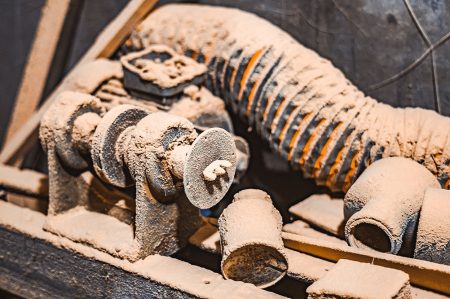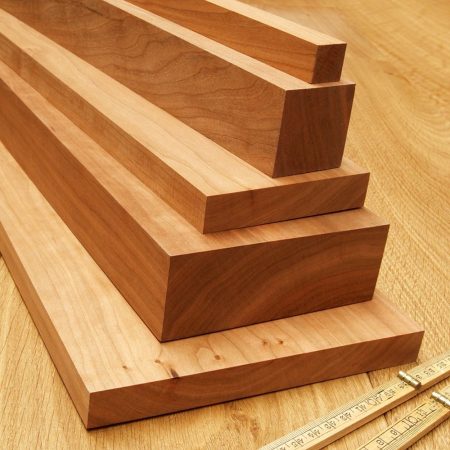OVERVIEW
Controlling and managing wood dust and debris in the workshop is a challenge, whether you’re a professional maker, or a hobbyist woodworker. A quick internet search will return a dizzying collection of information on dust collection and management that can leave you with more questions than answers. Why is it important that we have an effective way to manage wood dust and debris in our shops? Here are some of the more compelling reasons:
- Wood dust is considered a carcinogen by most health organizations. Long-term exposure to unmanaged wood dust is an extreme health risk. Short-term exposure to unmanaged wood dust can result in allergy-like symptoms. This is especially true for dust produced when working with certain wood species known to be toxic,
- Airborne wood dust (also known as dust flour) is combustible, and settled or at-rest wood dust can be flammable under the right conditions,
- Unmanaged dust in the workshop can infiltrate the motors of our shop equipment, dramatically shortening their lifespan,
- Settled dust in the shop can create unique safety hazards, from a slip and fall due to dust on the floor to accumulated dust restricting the proper operation of a tool.
This list isn’t meant to be exhaustive, and I am sure that you can add your own to the list. This article is designed more for the hobbyist woodworker or a small shop owner. Professional woodworking companies or large, multi-employee shops should reach out to one of the commercial dust management vendors to discuss your requirements.
For the purposes of this article, the term Dust Management is defined as any and all steps you may take to mitigate airborne and settled dust. This includes both active measures, such as the use of dust and chip collection or extraction equipment, to passive activities, such as the use of PPE or using a broom and dustpan or vacuum to clean up settled dust and debris.
When thinking about what level of dust management makes the most sense for you and your shop, ask yourself the following question: How many hours a day do I spend in my shop actually working wood? The importance of an effective program of dust management scales with your shop hours.
Moreover, the type of tools in your shop will influence your dust management requirements. For example, professional-level tools such as a cabinetmakers table saw, jointer, planer or large band saw will likely require a high capacity dust collector. Conversely, a shop vacuum may be sufficient to use with a random orbit sander or hand-held router.
The selection, design, and implementation of formal dust collection systems is beyond the scope of this article. Taking the time to do your homework is a good investment of your time, and in the long run can save you money. It helps to educate yourself a bit on the science of dust collection before you chose a dust collector and/or design your system. I suggest you start with Bill Pentz’s thoroughly detailed treatment on dust collection.
Personal Safety and Protection
The use of personal protective equipment (PPE) is an important first step in dealing with dust in the shop, regardless of the dust collection equipment you use.
Eye Protection: This is a must in any shop. You’ll be protecting your eyes from injury from flying debris and, depending on the style of eye protection you chose, you may also be able to protect your eyes from dust.
Hearing Protection: While we’re focused on dust management, hearing protection may seem like an odd choice for this list; however, the use of hearing protection can reduce the amount of dust that may find its way into your ear canal. Over time, dust can accumulate in the ear canal and impact your hearing.
Masks: Even if you have an incredibly effective dust collecting and filtering, there are still certain activities in the shop, such as sanding, where the use of an N-95 mask make sense. This protects you from cast-off dust that may not be captured by a vacuum-attached sander.
Disposable Protective Clothing: This may seem like a bit much, but remember that dust will infiltrate your clothing, which means you’ll carry dust into your personal vehicle and/or home. Something as simple as a woodworker’s apron can help keep you clean. I have a friend that changes out of his shop clothes at the end of the day so he isn’t bringing wood dust home with him.
Basic Dust Management
Before you make the decision to spend hundreds, or perhaps thousands of dollars on dust collection, there are a few basic steps you can take to help manage wood dust and debris in your shop. Remember, a clean shop is a happy shop. 😉
Dust Pan and Broom: The low-cost solution to keeping your shop clean. It only takes a few minutes at the end of your workday to clean-up whatever dust and debris you have created that day. Make this a part of the time when you start to wind down for the day. It’s also a great time to put away any tools you have used.
Shop Vacuum: Having a small, portable vacuum designed for the shop environment is a must-have. It will make a huge difference in your work to combat dust and debris and make daily clean-up much quicker and easier – it also allows you to do a deeper level of cleaning than you can do with a dust pan and broom. Depending on the work you do, a shop vacuum may sufficient to meet the majority of your dust management needs, including serving as a dust collector.
Author’s Note: Shop vacuums can range in price from a low of $75 for the entry-level models sold at the big box stores, to near $1,000 for a high-end Festool Dust Extractor. Take time to do your research.
Tool Fittings for Shop Vacuum: This can (and probably will) be a point of frustration for you. Why? It’s because there is no uniform standard for the size of dust collection outlets on hand held power tools. There are differences between manufacturers and sometimes amongst tools from the same manufacturer. Happily, there are several vendors that sell rubber tipped fittings that make it easier to work with odd sized connections.
Tool Brush: Consider keeping a small, hand-held brush near your table or band saw. A good choice is the type of brush that draftsman use. These are small and work great to sweep away dust and debris from a table or band saw top.
Filter Cleaning: If you have an existing dust collection unit, it’s important to regularly clean the filter, whether it’s a pleated or cloth filter. After a recent filter cleaning (pleated), I measured a 50% improvement in my overall CFM output.
Chips vs. Dust
The tools in our shops produce two types of debris: chips and dust.
Chips: These are considered milling artifacts that are more substantive and heaver than dust. Powered tools such as jointers, planers, and molders produce chips. Some other tool operations may also produce chip-like debris, such as a forstner bit on a drill press, or a dado blade on a table saw.
Dust: Almost all milling will produce some form of dust, but most commonly from table or band saws, sanders, miter saws and so on. The size of dust particulates is dependent on the operation (e.g., sanding), and species of wood. You can read more about this here. For example, in one study, sanding walnut at 180 grit produced a 150 µm particle. For comparison, the business end of a common straight pin is 127 µm. Some engineered materials, such as MDF, can produce high levels of dust.
Advanced Dust Management
For many folks, basic dust management is sufficient. Others may need more.
Air Filtration Units: These units are designed specifically for woodworking environments and are typically suspended from the ceiling. They are designed to filter and circulate the air every few hours. Most manufacturers have units of different sizes for small, mid-sized or large shops.
Author’s Note: The value of an air filtration unit can’t be understated and it’s something you should consider as an essential part of your shop’s basic dust management practices.
Dust Extraction vs. Dust Collection: Most dust collectors are designed to handle large volumes of chips and debris and (depending on the unit’s size) can be set up to support an entire shop (within limits). On the other hand, a dust extractor is designed to capture dust and airborne particles at the source. Understanding what “dust” you’re trying to control is critically important when selecting a dust collector or extractor.
It’s helpful to understand that dust collection/extraction units come in one of two varieties: HVLP (High Volume Low Pressure), and HPLV (High Pressure Low Volume). Most dust collection systems marketed by the likes of Jet, Delta, or Oneida use HVLP and are great for chip collection, but usually poor with dust. HPLV-based systems, such as most shop vacuums or a CamVac excel at dust collection, but may struggle with chips. There are exceptions, of course, but this is a reasonable rule of thumb.
Dust Collection Systems: A “dust collection system” consists of one or more dust collection units, as well as the plumbing (piping) that connects your various tools to the collector(s), blast gates to manage the flow of air and connections to the individual tools. Laying out a system takes some thought. Factors such as your shop’s layout, ceiling height, tool usage, available electrical power, piping choice, and of course your budget all come in to play. Some vendors provide online design guidance. Be cautious about accepting at face value the “rated CFM” found on a manufacturer’s marketing material or sales page, as these tend to be overstated – sometimes wildely so.
Author’s Note: It’s human nature to feel that if your current dust collection isn’t all that effective, you need a more powerful unit. While that may be the ultimate solution, it’s more important that you have optimized your existing system before you buy a new unit. Something as simple as a dirty filter, or air leakage, or the use of high-resistance hoses can greatly compromise the efficiency of your dust collection.
Cyclonic Chip Separation: This is a technique uses centrifugal force and the momentum of the chip and dust-laden air to separate heavier dust from the air stream. Some dust collection units feature a built-in cyclone, but these typically are more expensive than traditional (non-cyclone) units. There are also third-party products, such as the Dust Deputy®, that you can add on to handle chip seperation.
Portable vs. Fixed Units: Depending on the layout of your shop, you may find that having a portable (movable) dust collection or extractor may work for you. Whether this makes sense for you may come down to a budgetary and/or personal preference.
CLOSING THOUGHTS
The goal of this article is to hopefully provide you with some food for thought. It was not meant to be a comprehensive treatment on dust collection, simply because you can find this information elsewhere. That said, I know from personal experience that it’s easy to make a costly mistake if you haven’t done your homework. Best of luck and happy woodworking!!!!
Please note that any references to specific products or manufacturers is simply for illustration purposes and are not intended as an endorsement.





